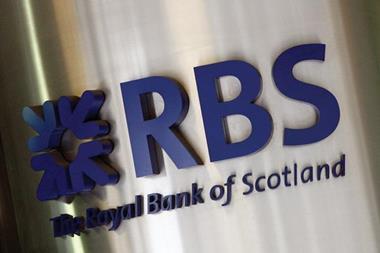The UK private motor market has taken some heavy losses during the last year, and insurers have had to adapt accordingly. But as prior-year reserves dry out, is there even more trouble ahead?
When Direct Line pumped in £448m in reserves strengthening earlier this year, and then three months later Equity Red Star received a £206m capital injection, a private motor market weary of bad news was shaken once again.
Many then expected more revelations of reserve strengthening to emerge this year. Motor insurers have been struggling to cope with a flood of claims from previous years, while falling investment returns have meant reserves from previous years have all but dried up.
A recent report by AM Best reveals that prior-year releases in private motor knocked off just 1.4% of combined operating ratio last year. That compares with 9% in 2008, 11.5% in 2007 and 18.4% in 2006.
Against all expectations, however, the big-name insurers – Aviva, RSA, AXA, Allianz and Ageas – report that they are in good shape for private motor. Operations are running well and there’s even money left in the piggy bank from prior years.
So is the private motor market sitting on a timebomb? Or did Direct Line and Equity parent IAG just get it badly wrong?
Direct Line claims it has been burned by payment protection orders (PPO), which are spread over a person’s life and are usually more expensive than a lump sum payment.
AXA claims director David Williams, however, says that this is no excuse – it’s just a case of poor reserving judgments.
“We’ve all known about PPO for ages. Yes, they drive up the cost of the current claim, but PPOs still aren’t a massive issue in the market. In terms of the proportion of severe bodily injury claims that are settled on a PPO basis, it's still tiny,” he says.
“So when I see people saying: ‘We have a bit of a problem: it’s PPO’, I think: ‘No it’s not’. People have not adequately reserved in prior years and they’re now having to put extra funds in to sort things out. PPO is just one of the factors.”
Equity Red Star was caught by surprise by the huge growth in bodily injury claims inflation, which took off from 2007.
But Williams believes the seeds of destruction were sown several years before that. "A number of companies, ourselves included, saw massive deterioration in claims costs and massive increases in the costs of bodily injury claims, probably from 2000 to 2004, when you had the Access to Justice bill and the cost of care was really rocketing.
“So some of us have sorted things out and got our act together. We have strengthened our reserves. But that was more than five years ago.”
The other big insurers are in a similar position. RSA and Aviva are still releasing prior years’ reserves and maintain that they are strongly placed. Ageas is functioning without any reserve releases, let alone strengthening. And Allianz chief executive Andrew Torrance says its prior year claims development is favourable, although he cannot be certain this will continue.
Storm clouds ahead
So nothing to fear, then – the piggy banks are full and problems were spotted early.
Not quite. A powerful group of insurance heads, actuaries and consultants believe there are storm clouds on the horizon for the UK motor market.
Their argument goes something like this: despite the reserves feed from previous years, the pot is largely empty, especially as prior-year reserves run into the more troublesome years of 2007 and onwards.
Furthermore, actuaries like to make assessments based on long-term trends, such as 10-year records. But the industry, shaken up by price comparison sites and claims farming, has changed beyond recognition during the course of the past decade.
It is also increasingly difficult to build up information on customers, because the aggregator generation switches cover at the flick of a button. Meanwhile, customers are still being lured by claims farmers, so the average cost and number of claimants per claim is changing rapidly.
Groupama chief executive Francois-Xavier Boisseau, who has overseen reserve strengthening for the 2008 and 2009 year accounts, stresses: “People might say they always had a cautious reserving policy so that they could absorb bad news. It’s possible. But I have to say that it is pretty difficult to be cautious on reserving and conservative today for two reasons. First, more and more, there is the international accounting rule, which really doesn’t give you much room for manoeuvre in terms of having prudent reserves. You have to be very transparent about that,” he says.
“But the second factor is that the economic environment, the depressed investment income, the huge level of competition, mean that most underwriters do not have that much room to be prudent with their reserves.
“I am sceptical on this type of argument, but I can only speak for my company,” he adds.
Nevertheless, the experts are swayed by this point. David Brown, who is chairing a report for the actuaries’ professional body into third-party motor claims, says one issue to emerge from his working party is that actual inflation levels are higher than claims handlers’ forecasts. “We don’t know if companies are under-reserving or not, but it’s certainly a possibility,” he says.
Reserve limitations
The case for reserve strengthening is stronger for motor-only insurers. Whereas large, well-diversified insurers can use reserves from other parts of the business, motor-only insurers only have one well to draw from. Equity Red Star and Direct Line both fall into this category.
Travelling a similar path is Esure, which is chiefly a motor insurer. It strengthened its reserves by £13.6m for the 2009 accounts.
And NIG is another one to watch closely. The broker-only insurer put into run-off its £250m gross written premium personal lines book, which is dominated by motor, because of its terrible claims experience. The run-off book may well need a crutch.
One industry source says: “I would think that there are some insurers that have not yet acknowledged their reserve strengthening. However, the way rates are going up, they will probably be alright.
“But some insurers haven’t announced that strengthening, and will probably still need to do so – especially some of the direct players."
Apart from Direct Line, the direct operators reject any suggestion of reserve strengthening. Yet even if firms manage to clear out their prior-year claims, there are still hazards ahead in controlling claims from the 2010 account.
Taking stock
Many insurers have jacked up their rates by up to 30% in a year. They are also sharpening their underwriting, tightening distribution channels, controlling expenses and managing their churn more effectively, says EMB consultant Naem Ali. But will this be enough?
Brown says: “I think that if you put together the inflation we’re seeing in the working party data – albeit with the significant price increases that are going through – together with the FSA returns in 2009, which indicate that the market for personal lines motor is a loss ratio of 120%, I would argue that it’s not quite enough for the whole of the market.”
All this uncertainty is providing plenty of work for the actuaries. Typically, they make assessments on a half-year or end-of-year basis, but a number of companies are so concerned that they are conducting snap reviews of their books.
The actuaries involved are likely to find trouble. While some of the larger operators, especially those with both commercial and personal lines, may have avoided the storm, others, especially those dominated by motor with dried up reserves, are likely to face some pain.
It remains to be seen whether Direct Line and Equity Red Star have done enough. But one thing is certain: a weary private motor market can expect more bad news this year and probably into next year as well. This is one story that won’t go away. IT
Hosted by comedian and actor Tom Allen, 34 Gold, 23 Silver and 22 Bronze awards were handed out across an amazing 34 categories recognising brilliance and innovation right across the breadth of UK general insurance.














































No comments yet